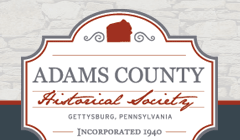Document Type
Article
Abstract
Thirty years after the battle of Gettysburg, the small Pennsylvania town was once again besieged—only this time, the invaders were not rebels, but entrepreneurs with an unquenchable thirst for profit. The most visible sign of their voracious commercialism was an electric trolley line (“from which the shouts and songs of revelry may arise to drown the screams of the suffering”) belting the battlefield. The Gettysburg Electric Railway Company’s venture raised a host of new questions regarding the importance of battlefield preservation. Most significantly, it prompted Americans to ask if they had any obligation to set aside for posterity the land where it was saved. [excerpt]
Recommended Citation
Rudy, John M.
(2014)
"Dan Sickles, William H. Tipton, and the Birth of Battlefield Preservation,"
Adams County History: Vol. 20, Article 4.
Available at:
https://cupola.gettysburg.edu/ach/vol20/iss1/4
Included in
Cultural History Commons, Military History Commons, Public History Commons, Social History Commons, United States History Commons
